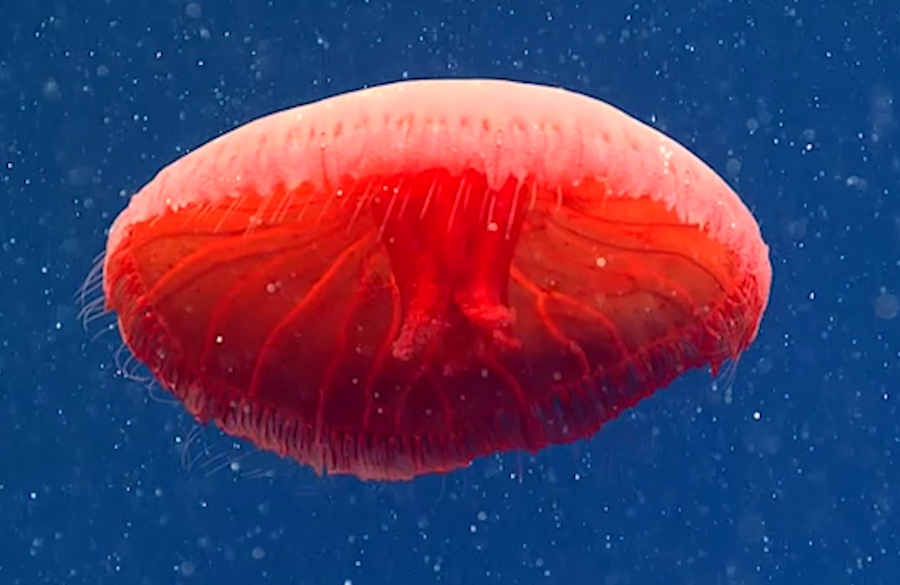Mysterious blood-red jellyfish may be rare species unknown to science, researchers say
The jelly was spotted about 2,300 feet underwater during an ambitious deep-ocean expedition.

Researchers with the National Oceanic and Atmospheric Administration (NOAA) may have discovered a previously unknown jellyfish, bobbing along almost 2,300 feet (700 meters) underwater.
Like a floating beret fringed with thin tassels, the jelly in question has a blood-red body and appears to belong to the genus Poralia, the researchers said in a statement. Only one other Poralia species has been described so far — Poralia rufescens, which has a bell-shaped body, 30 tentacles and lives in deep water across the world's oceans.
The NOAA team spotted the as-yet-unnamed jellyfish in footage from a deep-water dive conducted on July 28, off the coast of Newport, Rhode Island. The agency's remotely operated vehicle (ROV) Deep Discoverer dove to a maximum depth of about 3,000 feet (915 m) into the North Atlantic Ocean, filming any creatures that it passed.
Quinn Girasek, a NOAA intern studying biology at Juniata College in Pennsylvania, first saw the jellyfish while annotating footage from the dive.
"Overall, a variety of animals were seen, like ctenophores [also called comb jellies], cnidarians, crustaceans and Actinopterygii (ray-finned fishes)," Girasek said in the statement. "We also saw several undescribed families and potential new species."
This deep dive through the water column was part of NOAA's North Atlantic Stepping Stones expedition, which the team conducted from June 30 through July 29. The team completed 25 dives, at depths ranging from 820 to 13,124 feet (250 to 4,000 m), in order to survey the elusive deep-sea creatures lurking in the area.
Some discoveries from the mission looked shockingly familiar. A few days earlier in the expedition, the team stumbled upon a yellow sea sponge lounging alongside a pink sea star some 6,184 feet (1,885 m) underwater. Christopher Mah, a marine biologist at Smithsonian's National Museum of Natural History, likened the pair to a "real-life SpongeBob and Patrick" when he saw the image on Twitter.
Get the world’s most fascinating discoveries delivered straight to your inbox.
Originally published on Live Science.

Brandon is the space / physics editor at Live Science. With more than 20 years of editorial experience, his writing has appeared in The Washington Post, Reader's Digest, CBS.com, the Richard Dawkins Foundation website and other outlets. He holds a bachelor's degree in creative writing from the University of Arizona, with minors in journalism and media arts. His interests include black holes, asteroids and comets, and the search for extraterrestrial life.


